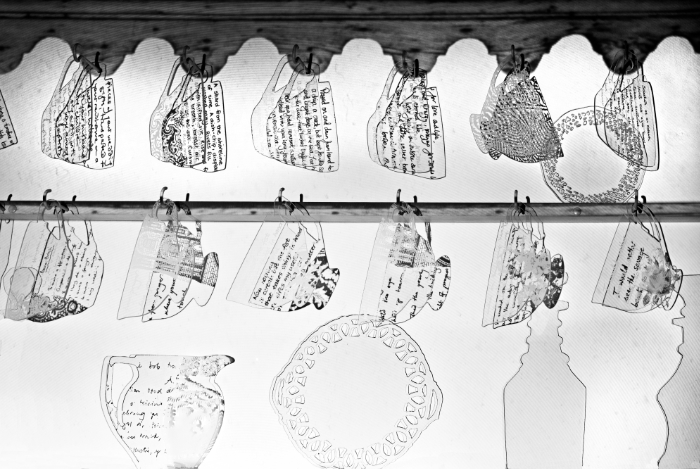
Transformational material
Mixed media artist and CGS board member Linda Norris talks about the importance of community in her practice and how working with glass with disadvantaged people has helped her develop and grow alongside those with whom she collaborates on group projects.
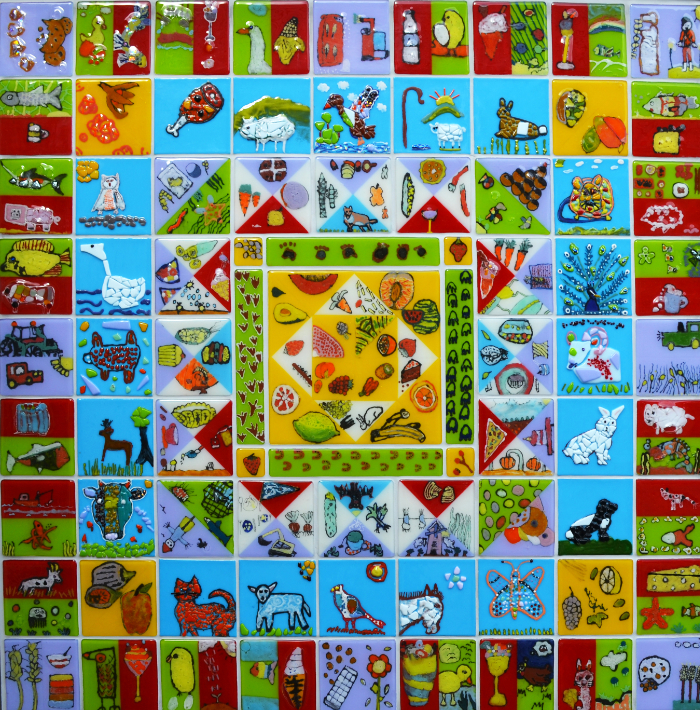
I am an artist based in Wales working in mixed media. Since leaving college in 1982, I have maintained a lively community arts practice alongside developing my own work. When I came to glass in 2012 it was obvious that I needed to incorporate this transformational media into that work, as well as into my studio practice.
I wanted to use my skills for the benefit of others, though I decided early on not to train as an arts therapist. Instead, I wanted to facilitate opportunities for those in underrepresented groups and circumstances to explore and express their own creativity. I wanted people to take part of their own free will and not as part of a clinical therapy programme. (Having said that, I have occassionally worked with people on probation who were obliged to attend my sessions!)
I was motivated by a desire to share the freedom and agency I found in creative activity with others in the community, as well as by the need to fund my own practice and Community Arts fitted the bill. Initially, in the 1980s, I painted murals with women and children in Women’s Aid refuges across Wales. The idea was always to empower people to improve their environment and to find some solace and joy in creative activity and in interacting with others whilst creatively occupied.
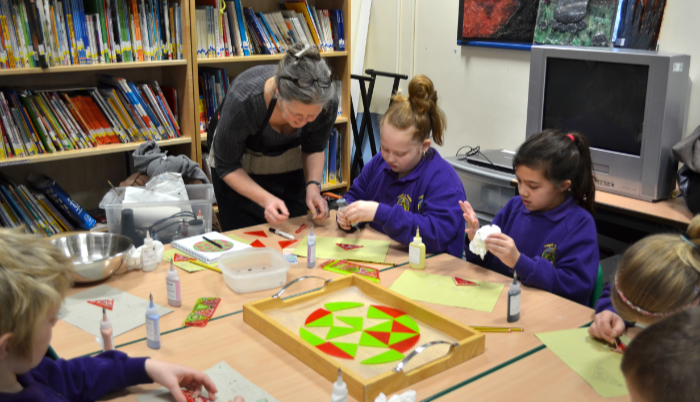
I am fully Disclosure and Barring Service (DBS) checked, which enables me to work with vulnerable adults and children. I’ve developed my skills in community arts and teaching over many years.
Apart from four years when I was employed as an artist at Kaleidoscope, which was a hostel for young people and a drug project in Kingston-on-Thames, I have always been self-employed and have nearly always had to fundraise for my projects myself. This has not always been easy! At times I have been juggling many different day and evening sessions while writing reports for funders and working on fundraising for future projects, alongside maintaining and promoting my own practice. But it has always been rewarding to see the way people, and relationships, can be transformed and flourish by the simple human activity of creative interaction with materials.
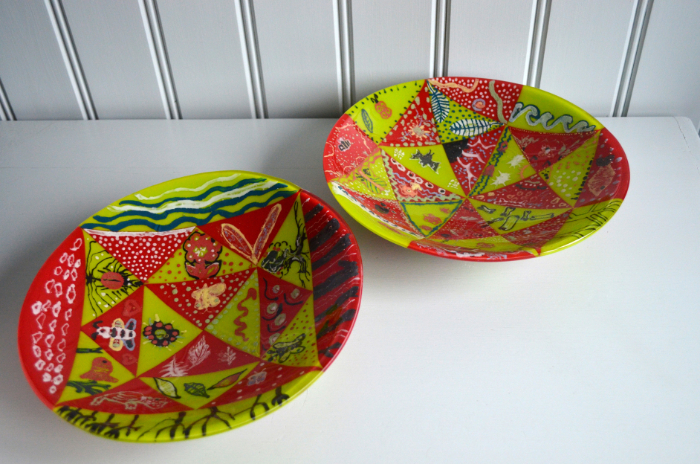
Often individuals who have behavioural challenges really find their voice and confidence through the attention I am able to give them. One parent of an autistic boy who was in a mainstream school and who had previously not been given appropriate support or understanding, and therefore had not managed to achieve any task in school (and who I had to insist was included in my project), wrote to me and said what an incredibe experience it had been for him and how he had found hidden talents and been so proud of his achievements. He has a real ability with his hands, which had been overlooked in the busy conventional classroom setting. Very quickly he became my assistant and was showing the kids who had previously bullied him how to cut and arrange glass for fusing.
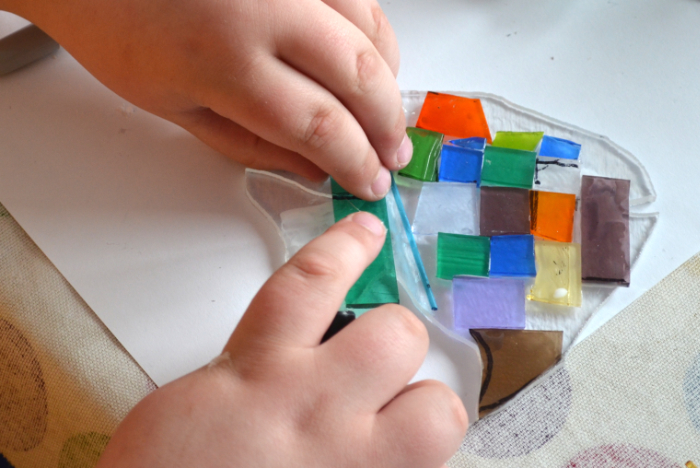
I have developed tools and ways of working with glass that make it accessible and safe for everybody to handle and use. Sometimes I pre-cut shapes of glass, I mix frit powders with a paste made from 50 per cent water and 50 per cent aloe vera gel, which I package into easy-to-hold small bottles with nozzles. If necessary, I pre-fire striking colours so that people can see the colour the glass will be once it is fired, or to soften sharp edges for safety reasons. Having said that, I generally prefer people of all ages and abilities to try to handle the raw material in all its glory, and I find that explaining dangers, and trusting people to take responsibility for themselves, is all part of the empowering experience. Anyone who has ever tried to cut paper with small children using ‘safe’ scissors, will know that properly handled sharp scissors are actually far safer, more effective and result in a better learning opportunity.
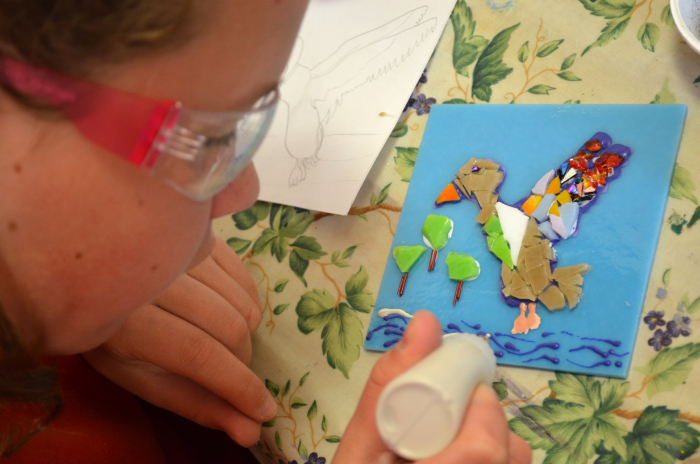
Over the years I have developed these practical skills, as well as skills in organising my own time, taking initiative, documenting projects, and working with people of all ages who are living in all kinds of circumstances. I have worked with people with autism, dementia, as well as mental and physical health challenges of all types. I have adapted and learned from my students and developed safe and effective ways of communicating across language and speech challenges, plus developed ways of working that always enable the participants to do the work themselves.
As in everything, communication is key! I have learned other languages (including Makaton), I have learned to listen to every form of communication, not just verbal. I have found effective ways to give people choices and facilitate meaningful, creative activity across the community. I have worked in schools and other institutions and I have taken the activity to the participants in locations where they feel safe.
I have collaborated with teachers, health and social care workers, probation officers, parents and carers, and occasionally with other artists. In particular, I have collaborated with writers. For one project in Ysgol Ger Y Llan, a Welsh language school, I worked with Welsh writer, Damian Walford Davies, to develop some text for a window I was making with a group of hard-to-reach children for the school library. The theme was Y Môr (The Sea), so to engage them in the project and introduce them to glass, I got each of the children to make glass fish badges before starting work on the window. Damian turned up with hand-outs and paper to write on, but the children were completely intimidated by the idea of writing, so we drew around the badges they had made as a way of getting them to come up with words they associated with the sea. Once the paper was covered in expressive pen marks the children were able to write some words and a bilingual poem was formed.
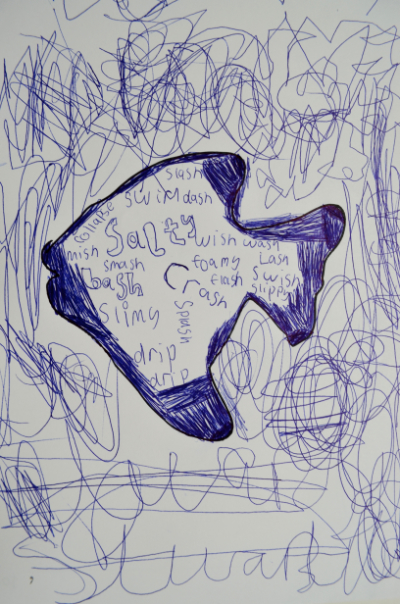
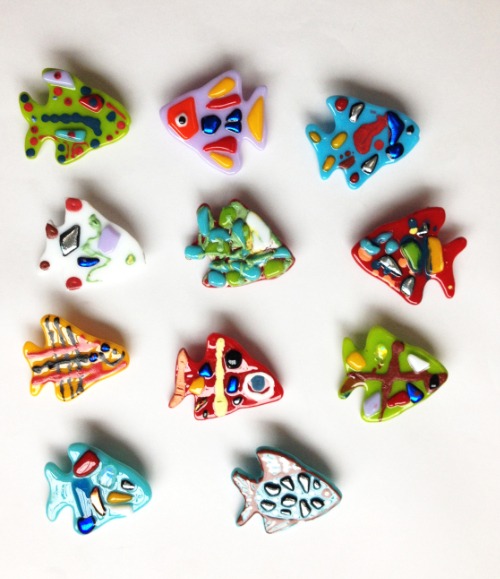
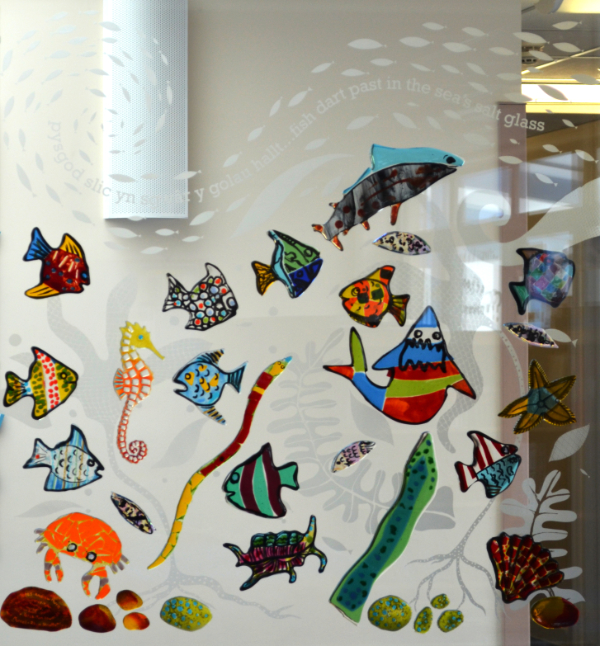
The completed window at Letterston CP School, Pembrokeshire. Photo: Linda Norris.
For several years, I worked as art and craft tutor with young adults with autism and complex learning needs for Ruskin Mill Trust at their Pembrokeshire farm college, Coleg Plas Dwbl. Ruskin Mill Trust takes a Rudolf Steiner-inspired approach to teaching craft, and the Pedagogy of Craft it has developed as a method of learning through craft as an integrated body/mind learning and therapeutic experience, resonated with me.
I have always learned a lot from my community practice and this has fed into my own work. Sometimes I have learned new techniques in order to facilitate a project and sometimes I have developed new ideas that I have used in my own work. In another part of my practice, Rachel Phillips and I work together to make architectural glass as Studio Melyn. In 2017 we were commissioned to make an internal screen wall for Bro Cerwyn, a health and social care setting in Pembrokeshire, and I worked with local school children to develop the design. I led some drawing workshops where we went out into the landscape and the children learned to draw the landscape from life. The pupils had been expecting to design using photographs and computers, so to go outside was a revelation to them! We returned to the classroom and made prints from ferns and leaves which Rachel and I later incorporated directly into our design.
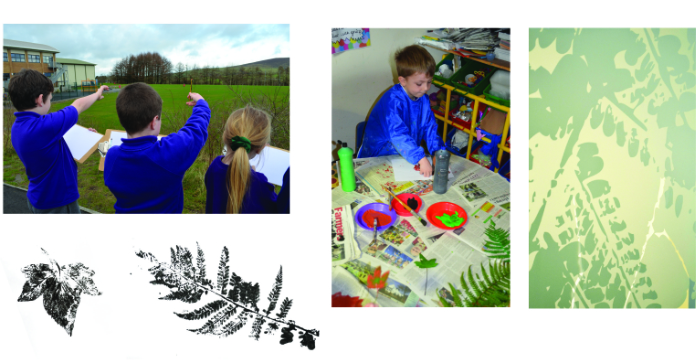
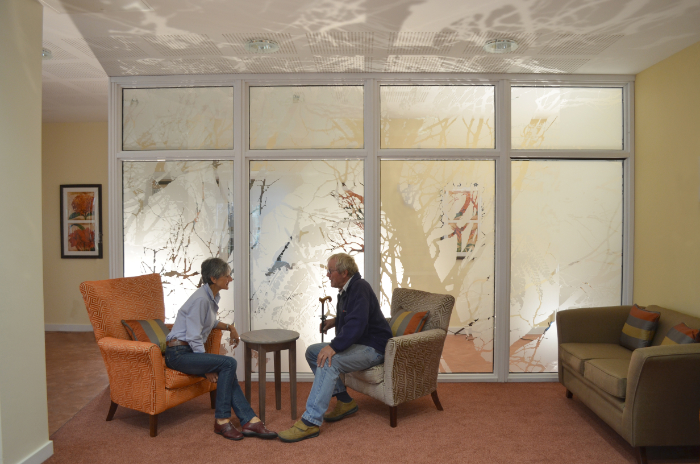
In recent years the boundary between my own practice and my community projects has become less distinct. During the COVID-19 pandemic lockdowns I worked with poet, Emma Baines, on a project called ‘Bards ’n’ Shards’, where I was commissioned by Narberth Museum to make work inspired by poems written by the participants in online creative writing workshops. These pieces were gifted to the participants on completion of the project in a gesture democratising the commissioning process. Some of these pieces are currently on show in Aberystwyth Arts Centre as part of the Re:Made exhibition.
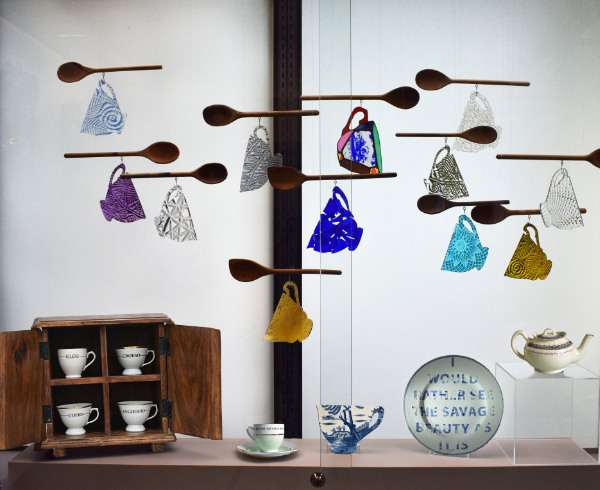
Following on from this I developed my piece, Fragment Dresser (see main feature image for a detail of this installation), made of cup-, jug- and teapot-shaped flat glass, which I engraved with fragments of poems inspired by ceramic shards found by the workshop participants on their daily walks.
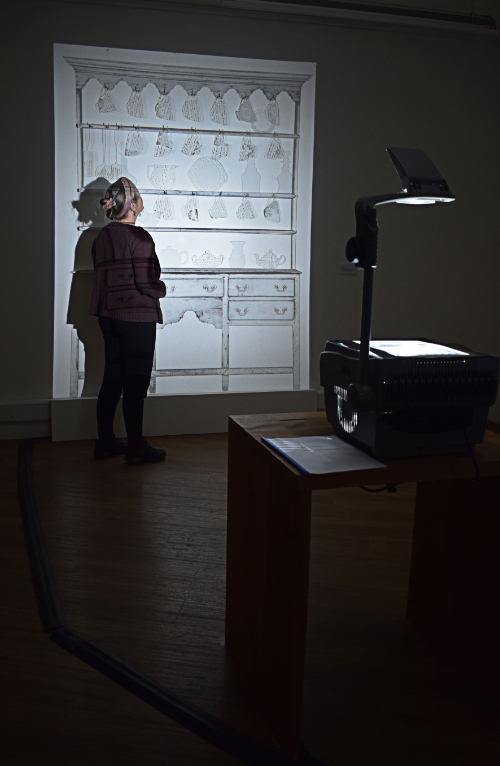
This work has, in turn, gone on to inspire a community project undertaken by ceramic artist, Sizanne Lanchbury, which is currently on show alongside my own work in Re:Made at Aberystwyth Arts Centre.
One of the things I have valued, and actively engaged with, since I started working in glass is the community that exists among glass makers and artists who work with glass. The generosity of spirit and cameradery of my fellow artists has been an inspiration in itself. In 2023 I formed Broken Home, a collective of women who work with glass and want to use the medium to illuminate social and political issues, specifically the growing plague of domestic violence and coercion experienced primarily by women across continents. In 2023 we made No Place Like Home, a collaborative work which was shown at the International Festival of Glass in Stourbridge. The Collective has recently expanded and we are currently working on our proposal for a new work to be shown at The Glass Art Museum of Alcorcón (MAVA) in Madrid in 2026.
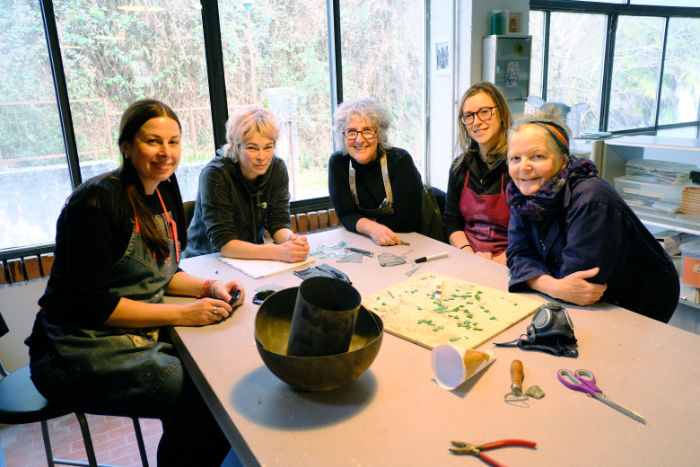
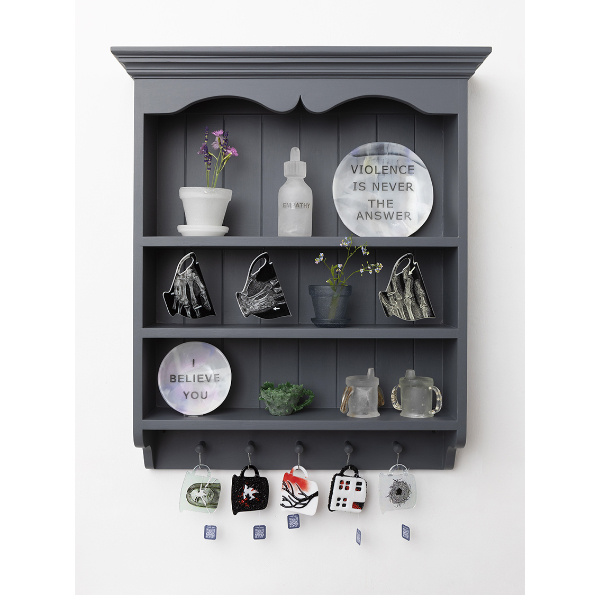
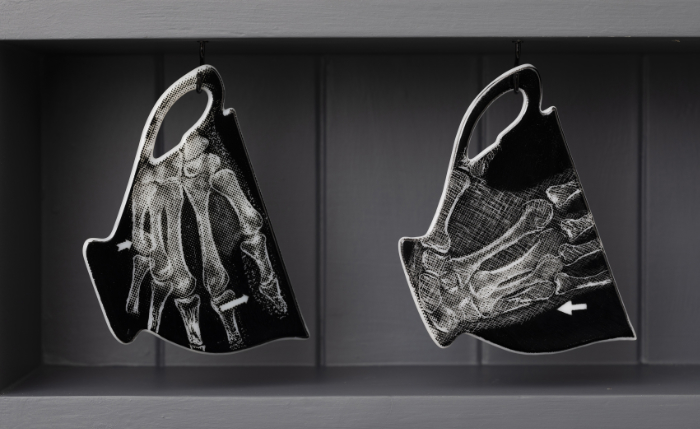
As an artist, my work is all about connection: connection with place, with others, with our histories and landscapes. As a transformational medium, glass has given me new ways to express ideas and evoke feeling in my work, and I take delight in the technical challenges. As a community arts practitioner it offers a myriad of possibilities. The making process is absorbing; people can see that they can change the material by applying heat, by fusing it together, by kiln forming and engraving… They can learn about change and control, about fragility and strength and chemical properties and, above all, they can have fun playing with transparency and colour and make something beautiful in the process.
Find out more about Linda Norris via her website.
Main feature image: Detail of ‘Fragment Dresser’ installation by Linda Norris.